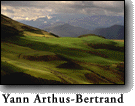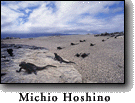Introduction to Ecuador
Geographically, Ecuador is a small country yet is uniquely endowed with a dramatic topography and a variety of climatic zones, vegetation, birds and wildlife. Without ever leaving the country, the traveler can move in a matter of hours from jungle rainforest to foothills and the high slopes of the Andes, and then down to the Pacific coast, while observing a breathtaking panorama of scenery and nature.

En route, through Ecuador's wonderful world of nature, you will be able to follow the courses of rivers broad and narrow; rest along the shores of pristine lakes; explore mysterious caves and marvel at unique plant and animal species that have evolved undisturbed on isolated islands in the Pacific.
From the highlands to sea level, Ecuador's fascinating diversity is echoed by its people whose cultural origins and traditions contnue to be formed by their immediate geographical environment.
We intend to continue respecting that environment and protecting it, and we invite you to join us and discover a very special country.
A land of diverse Ecosystems

Ecuador is probably the world's most biodiversified country in both flora and fauna. Its biological richness is reflected in a variety of organisms: 10% of the world's vascular plant species is located within an area that covers just 0.02% of the Earth's surface. Its diverse ecosystems have interacted throughout geological history in a variety of habitats.

Just imagine all these regions in one country: the Galapagos archipelago, the Pacific coast, the Andes and the Amazon basin. Then, picture ecosystems that include cloud forests, Andean peaks, and dry or rainy tropical forests. To this, add mountain páramos and snowrimmed volcanoes, glacial or tectonic lakes and inlets of humid mangrove forests. Plus, don't forget the bordering ocean where the species are mixed and enriched by cold and warm currents.
FLORA: Even though it is only the size of Colorado, Ecuador has 25,000 species of vascular plants, more than all of North America (17,000). For instance, the orchid family for which Dodson has catalogued 2,725 species in Ecuador comprises up to 11% of the world's total and 30% of Latin America's orchid varieties. The Andes support 1,050 species. In the Amazon basic and along the coast, around 800 species have been collected.

FAUNA: Approximately 3.800 vertebrate species, 1,550 bird species, 320 species of mammals, 350 reptile species, 375 amphibian species, 800 fresh water fish species and 450 marine fish species have been catalogued in the country.
Ecuador has mores bird species per area than any other country in Latin America; 18% of the world's total species are represented here. Even though Brazil is 30 times larger than Ecuador, it has the same number of bird species.
Needless to say, Ecuador is a paradise for bird watching and research. Some 15% of the world's endemic species are found in the Sierra, on the Coast and in the Amazon, adding up to the densest bird population in the world.
When thinking small, remember that Ecuador has more than a million insect species, among them 4,500 species of beautiful butterflies. Or these, 2,500 are nocturnal.
All in all, Ecuador's treasury of fauna is incomparable even to others found in much larger regions.
Costa >>>>>
|